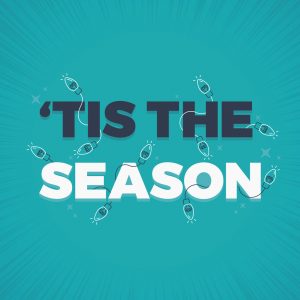Join our online community and be inspired to achieve your goals!
VIEW OUR FACEBOOK PAGEHow to be a great job seeker

Finding a job takes effort, commitment, time, and energy. To ensure success, you need a plan. Of course you need a polished application – a revamped resume and customised cover letter as well as a strong LinkedIn profile. But what about a structured job search strategy? Here’s our tips on what you need to do today to ensure success:
- Ensure consistency: You literally have seconds to catch a recruiter’s attention. If you don’t do that very quickly, you might never get a second chance. Even after you’ve gained their attention, you have to hold it long enough to be selected as a viable candidate. If your digital profile doesn’t match what you’re saying in your job application, you might lose the battle. Make sure you clean everything up so that you maintain consistency with dates, titles, formatting etc. across all mediums. Recruiters don’t want to be confused, and they don’t want to be left wondering.
- Stay motivated: Learning to handle rejection is an important part of the job search process and learning how to not let it get you down is even more important. At the end of the day, it can be a numbers game – so try not to let it get you down – instead focus on the future, don’t get disheartened, and just keep moving forward.
- Seek assistance: Search your target role on popular job sites and identify common recruiters. Add the sites to your favourites folder and make a note of individual consultants, HR and/or recruitment managers. Try to gain introductions, either via LinkedIn or in person – and reach out to ask for help. Often, these types of requests can lead to opportunities – if not, you haven’t lost anything but a little time!
- Know your elevator pitch: Finding a job is a sales process. You are the product with features, benefits, referrals, and great potential. In this process, it’s extremely important you have a great ‘elevator pitch’. This is a story (short, sharp and punchy) that positions you and the value you provide. Think about it this way – what if you found yourself in a lift with the hiring manager of the job you always dreamed of? Do you have a 30 second pitch on how you’re the perfect fit for the job? Great job seekers know their elevator pitch, and how to customise it depending on the person they are talking to.
- Build your online presence: There are many ways to do this including LinkedIn, writing a blog, developing a personal website, creating a Facebook page, Twitter account, or YouTube videos. This is especially important if you are looking for contract/freelance work, however as a minimum, most job seekers should have an up-to-date LinkedIn profile with a current, professional photo. Fill out as many sections as you can as this will provide a comprehensive view of you, as well as creating additional opportunities to connect with others.
- Activate your networks: Many roles are never advertised so this is an important part of your job search strategy. Think about who you know and who you might be able to connect with. Let your network know you are seeking new opportunities. There are many different ways to connect with your network so use them all – phone calls, emails, Facebook, LinkedIn, face-to-face meetings etc. Join relevant professional associations and networking groups, and attend seminars and connect with people in your industry. Develop a standard pitch about why you want to connect and what you can offer. Think about specific companies you’d like to work for then research their careers page and follow them on social media.
- Check your social media: First impressions count with most employers these days reviewing candidate’s social media pages as part of the screening process. Make sure your privacy settings are appropriate, clean up any inappropriate content, and check and edit pictures where necessary.
- Take your time to apply: This may seem counter-intuitive – especially if it’s your dream role. But, the worst thing you can do is submit an application without proper preparation. Taking time to research the company and people who work there, and asking for advice can be invaluable in ensuring your application gets read. You could start by calling the contact person listed on the job ad and ask them what key things they’re looking for in an application. You might be surprised at what they say and at the very least you’ll have a leg up on other candidates who didn’t take the time to do this.
- Prepare for the interview: One of the biggest mistakes we see is candidates focusing on landing the interview, but not thinking too much beyond that. To prepare for your interview you could brainstorm common questions, practise your answers, research the company, prepare some relevant questions of your own, plan what you will wear, and practise listening without interrupting – so you can respond more effectively to every question you get asked.
- Stay in touch: Once you’ve identified relevant recruiters and companies, make sure you follow them up at regular intervals and stay in touch.
Today’s job market is competitive and complex. Be prepared for the process to take considerably longer than you’re expecting. For higher paying roles it can take 6 – 12 months before you achieve success. There are many different avenues to leverage within the job search process so being organised will help.
Would you like to become a more successful job seeker? Perhaps you need assistance with writing a winning resume, creating a job search strategy, updating your LinkedIn profile or improving your interview skills? If so, please see our Resume and Cover Letter writing, Job Search Coaching, LinkedIn profile writing and Interview Training services.








